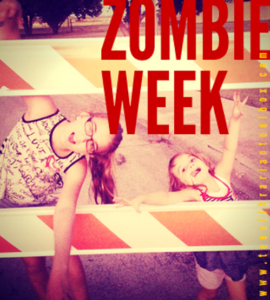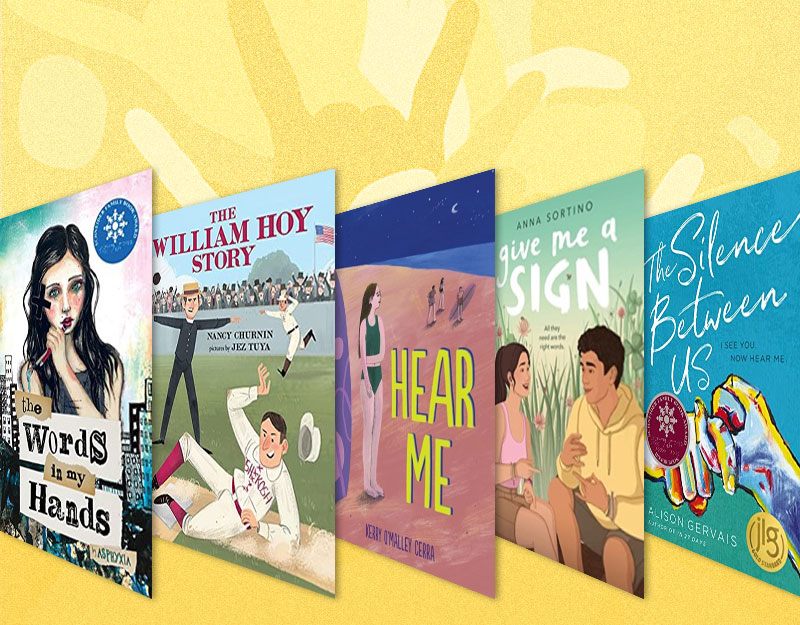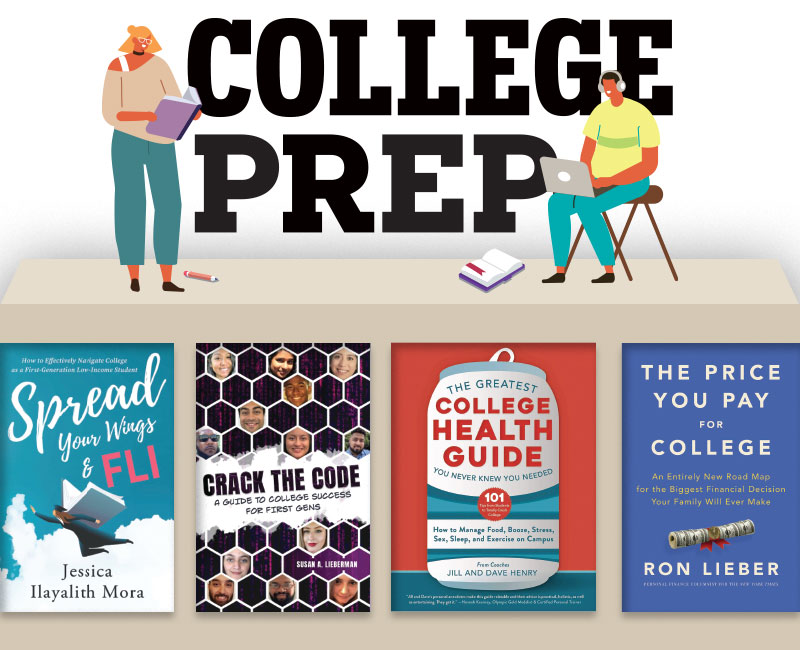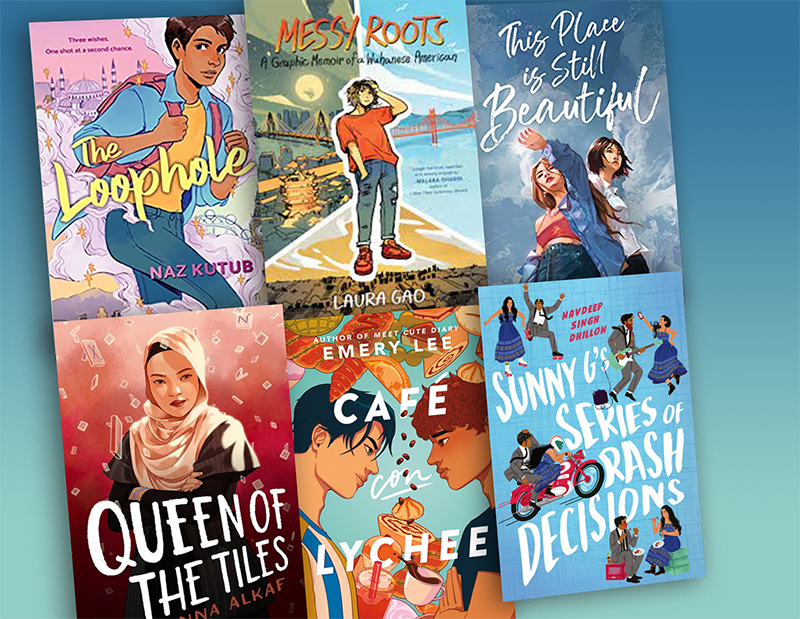The Walking Dead: The Comics VS. The TV Show (a guest post by Geri Diorio)
 Today for Zombie Week librarian Geri Diorio is joining us once again to talk about The Walking Dead graphic novel series and how it compares to the TV show.
Today for Zombie Week librarian Geri Diorio is joining us once again to talk about The Walking Dead graphic novel series and how it compares to the TV show.
WARNING! SPOILERS for the comic up to issue 138 and the show as of March 15, 2015
The Walking Dead may be one of the most popular television shows on the air, but it began as a black and white comic book. In fact, it remains both of these things. In 2003, Image Comics began publishing monthly issues of The Walking Dead, written by Robert Kirkman and drawn by Tony Moore and then later drawn by Charlie Adlard. The comic, which won the 2010 Eisner Award for the Best Continuing Series, focuses on a former sheriff named Rick Grimes, his family and compatriots, as they fight to survive in the zombie apocalypse.
The comic is about as far from the brightly-colored, splashy-paneled mental image one may have of comic books. There are no superheroes in tights, flying in to save the day. There are instead stark black and white images with some muted gray shading. This fits the overall vibe of the comic (and the tv show to an extent). While reading the comic, you continually think, “Things can’t get worse for these people.” And every time you think that, things get worse. Since this is a story set in the zombie apocalypse, there is not a lot to be cheery about. The black and white art does not mitigate the violence. One character’s death by a barbed-wire-wrapped baseball bat was still horribly gory, despite being rendered in stark black and white. Of course the impact of that image may also have a lot to do with the emotional attachment readers had to the character.
ADVERTISEMENT
ADVERTISEMENT
 The comic begins with Rick Grimes waking up in a hospital, having missed the beginning of the end of the world. He was injured on the job, and was in a coma. He awakens with no knowledge of what has happened in the world, making him a perfect analog for the reader. In the time that he has been unconscious, zombies have overrun Atlanta (and possibly the world). The reader discovers what has happened through Rick’s eyes and is as shocked as he is. In subsequent issues (Image has published more than 135 now), we learn more about what has happened in the world, and we see how individuals and groups are coping (or not coping as the case may be). Rick and his group move from a prison to a farm to a safe zone (a suburban development that has been secured by building enormous walls around it). They encounter people who need help, people who can offer help, and many people who offer violence and threats of death. There are two out-and-out wars that have happened over the course of the comic so far, and several major characters have been killed. While the zombies are a persistent threat, it has become clear that living humans are far more dangerous to Rick’s group than the dead.
The comic begins with Rick Grimes waking up in a hospital, having missed the beginning of the end of the world. He was injured on the job, and was in a coma. He awakens with no knowledge of what has happened in the world, making him a perfect analog for the reader. In the time that he has been unconscious, zombies have overrun Atlanta (and possibly the world). The reader discovers what has happened through Rick’s eyes and is as shocked as he is. In subsequent issues (Image has published more than 135 now), we learn more about what has happened in the world, and we see how individuals and groups are coping (or not coping as the case may be). Rick and his group move from a prison to a farm to a safe zone (a suburban development that has been secured by building enormous walls around it). They encounter people who need help, people who can offer help, and many people who offer violence and threats of death. There are two out-and-out wars that have happened over the course of the comic so far, and several major characters have been killed. While the zombies are a persistent threat, it has become clear that living humans are far more dangerous to Rick’s group than the dead.
The television series, (written by a variety of people, with Kirkman, Adlard, Moore, and former Executive Producer Frank Darabont having the lion’s share of writer’s credits), has used the comic as it’s template, but has varied and expanded from it to better suit the medium and, perhaps, to draw in more viewers.
Television is not print, and while comics are perhaps the most visually important print medium, they are still very static compared to the moving image. The tv show is literally bloodier. Special Effects Makeup Designer Greg Nicotero’s work often feature spurts of blood hitting the camera lens. It is interesting to note that the zombie blood has gone from bright red when the tv series began, to varying shades of brown now that the zombies are a year old and have decayed that much more. The only red blood seen on screen these days comes from living humans who are attacked. While the comic’s graphic black and white pictures are certainly arresting, it is the image of a wriggling, writhing, slimy well-zombie getting pulled in half on Hershel’s farm that has been burned into my retinas forever. From the very beginning, the show has gone past the blueprint of the comic to make the horror more gripping for viewers. In Days Gone By, the first episode of the show, Rick’s horse is pulled out from under him by a swarm of walkers and he manages to hide in a tank to escape the horde. This scene perfectly evoked a panel from the comic; but with the television camera’s ability to pull back, far above the herd of walkers, and show viewers the wriggling, struggling mass looking like deadly maggots converging on a piece of meat, the tv series showed viewers it was going to try and take The Walking Dead to a whole other level of visual horror. At times, nothing is as powerful as good special effects.
Of course there are many similarities between the properties. Rick Grimes is almost always center stage in both. While both the comic and the tv show have featured other characters, some of whom have become hugely popular in their own right (Hello, Jesus! Hello, Daryl!) it always comes back to Rick and his immediate family. The tv show has kept a lot of the comic’s overarching plot points: Hershel’s farm, the prison, meeting Michonne, Woodbury and the Governor, thinking Eugene can cure things, heading towards D.C., meeting cannibals, and going to Alexandria. But the show has branched out from its source material as well: taking the group to the CDC (a nice touch in my opinion, to explain the zombie apocalypse to viewers using a “scientific” basis), introducing characters like Daryl and Merle, turning Carol into a stone-cold pragmatic killer, and letting baby Judith live, while killing Andrea.
But TV show viewers who choose to go read the comic may find the most startling contrast is Rick’s lack of a right hand. In the comics, the Governor cuts it off, and Mr. Grimes has been making the best of it, living one-handed throughout the zombie apocalypse. This is something writer Robert Kirkman now regrets:
“When I’m writing a comic book, I don’t think about what I’m doing. I go, ‘Oh, it’d be pretty cool if they cut his hand off right now. That’d be pretty shocking, right?’. Then I do it, and five issues later, I write ‘Rick opens a can of beans’ and then I look at the script and think ‘He can’t do that now’. I didn’t even think that through.”1
This is just a broad comparison between the tv show and comic. If you would like to dive deeper into comparing and contrasting, may I suggest Screen Rush’s excellent take on this very topic? They look at each episode of the program and place screen shots next to comic panels so you can see how closely (or not) the show is hewing to its source material. They even compare tv scripts to the speech balloons in the comics. It always surprises me when dialog is lifted straight from the comic.
If you are a horror fan, there is certainly much to enjoy about The Walking Dead in both of its forms. And if you enjoy one version more than another, there is certainly much joy to be found in arguing about which is better!
1 DigitalSpy.com article : http://www.digitalspy.com/tv/s135/the-walking-dead/news/a331768/walking-dead-exec-we-shouldnt-cut-off-ricks-hand.html#~p78GwhCgjbieqG
ADVERTISEMENT
ADVERTISEMENT
Geri Diorio is the Teen Services Librarian at the Ridgefield Library in Ridgefield, Connecticut. She loves zombies, science fiction, fantasy, the Ninth Doctor, and Game of Thrones. You can contact her on Twitter – @geridiorio
More Zombie Talk at TLT
Zombie Prom
Stephanie Wilkes talks about her annual Zombie Prom. All the cool undead kids are doing it.
TPiB: It’s a Dead Man’s Party
Cool programming ideas you can do in your library whether you are a zombie or just running from them.
TPiB: Bring Out Your Dead, zombie party take 2
Zombies VS. Humans Lock-In, with a Doctor Who twist
Top 10 Survival Tips I Learned from Reading YA
Look, my chances are not good in a post-apocalyptic world. I like to lie in bed, read a book and drink pop with either my air conditioning or heater on. I don’t like to cook. I do not take my indoor plumbing for granted. Should the apocalypse happen, however, I have learned these 10 tips for survival which I am now going to share with you. See, even zombie books are educational.
What’s the Deal with Zombies Anyway?
Zombie Book Reviews at TLT:
Alice in Zombieland by Gena Showalter
This is Not a Test by Courtney Summers
The Infects by Sean Beaudoin
Fire and Ash by Jonathan Maberry
Contaminated by Em Garner
Sick by Tom Leveen
Zombie Baseball Beatdown by Paolo Bacigalupi
Monsters by Ilsa J. Bick
Eat, Brains, Love by Jeff Hart
Filed under: The Walking Dead, Zombie, Zombie Week, Zombies
About Karen Jensen, MLS
Karen Jensen has been a Teen Services Librarian for almost 30 years. She created TLT in 2011 and is the co-editor of The Whole Library Handbook: Teen Services with Heather Booth (ALA Editions, 2014).
ADVERTISEMENT
ADVERTISEMENT
SLJ Blog Network
2024 Books from Pura Belpré Winners
In Memorium: The Great Étienne Delessert Passes Away
Winnie-The-Pooh | Review
Parsing Religion in Public Schools
ADVERTISEMENT










I love your article and if you want to see more comics about the apocalypse, check out this site http://anarchybrotherspress.com/